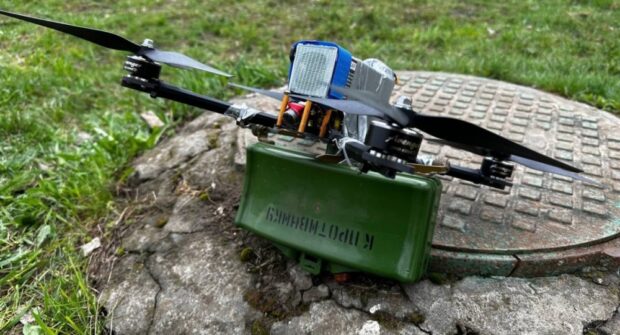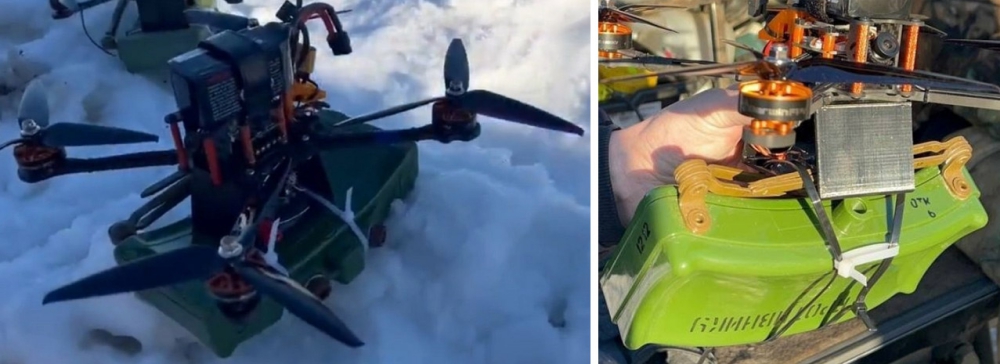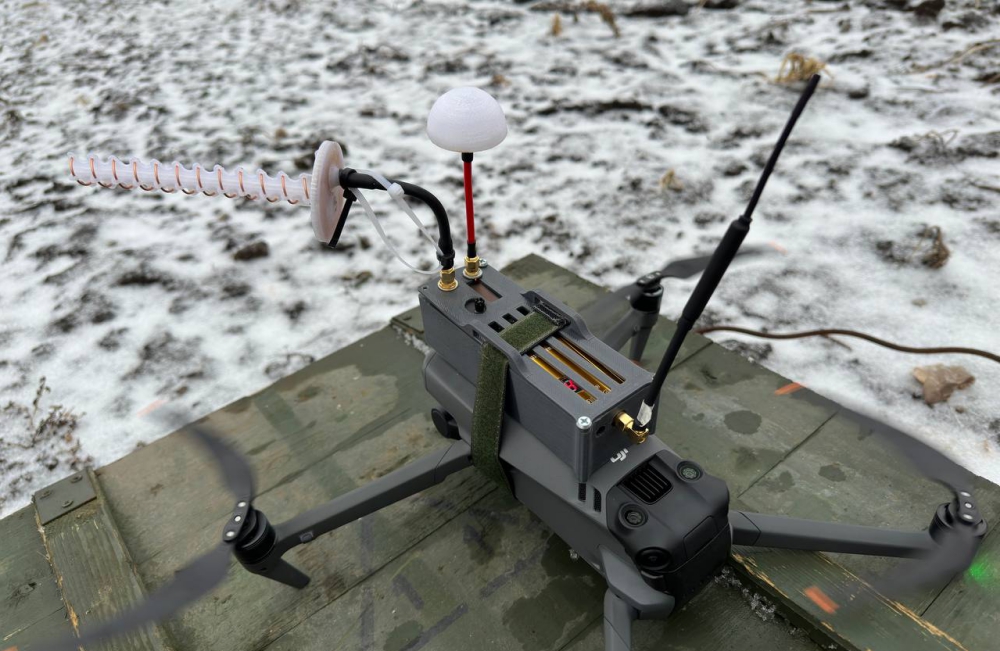Weapons based on commercial FPV-drones are not exclusive for the Ukrainian forces – Russians develop them, too, as well as ways of enhancing their combat effectiveness and EW protection.
Ukrainian Defense Forces, from the regular army to police servicemen, have been actively using small and cheap camera drones as first-person-view deliverers of explosives on positions of Russian invasion army. The development of these weapons was carried out by hundreds of volunteer communities.
But the thing is, Russians have been using similar FPV-drones for a while now, and they also share their ideas in public. In particular, they look for ways to increase the anti-personnel capabilities of FPV-drones, too. One of the experiments was with the MON-50 anti-personnel mine. The ignition is provided by an electric fuze triggered by the drone operator.
Although this idea can hardly be labeled as invented by Russians. Same in both principle and payload, there is already the Kargu kamikaze drone made by Turkish STM, it even has an automated target locking system. Nonetheless, these Russian FPV-drones out of Chinese components are a real threat for the Ukrainian soldiers.
That is why the Armed Forces of Ukraine use various means to counter this threat, including electronic warfare weapons. The same goes for the Russians, too. Another idea they came up with was to use a drone as a signal repeater.
For that purpose, they took an ordinary Mavic and attached a repeater device with a separate power supply bank and several antennas, including the directional spiral antenna for stability of the transmission. The idea is, first a repeater drone deploys in a position not too far so the operator can keep control of it, then the FPV-drone departs, too.
These were some of the ways Russians try to increase the effectiveness of their minor kamikaze drone technologies and actively produce them, although the already traditional russian corruption and centralization of cash flow are of help for the Ukrainian Army in this situation: the russians are already having the centralization process put in motion, and all the orders are awarded to big companies, whereas the smaller manufactures are being pushed out of the market by major players. For example, there was a project called Binokl made of the same Chinese components that was actively advertised in Russia.
At the same time, there is little hope that international sanctions on russia would obstruct these activities in some way. Detailed examination of another “centralized” drone called Bumerang shows all the components are bought ready-made on the Chinese civilian market.
In these circumstances, with cheap FPV-drones being actively developed in russia, the advantage on the battlefield belongs to the one who manages to establish mass production with less resource consumption and finds more effective ways of countering.
Source: Defence Express



